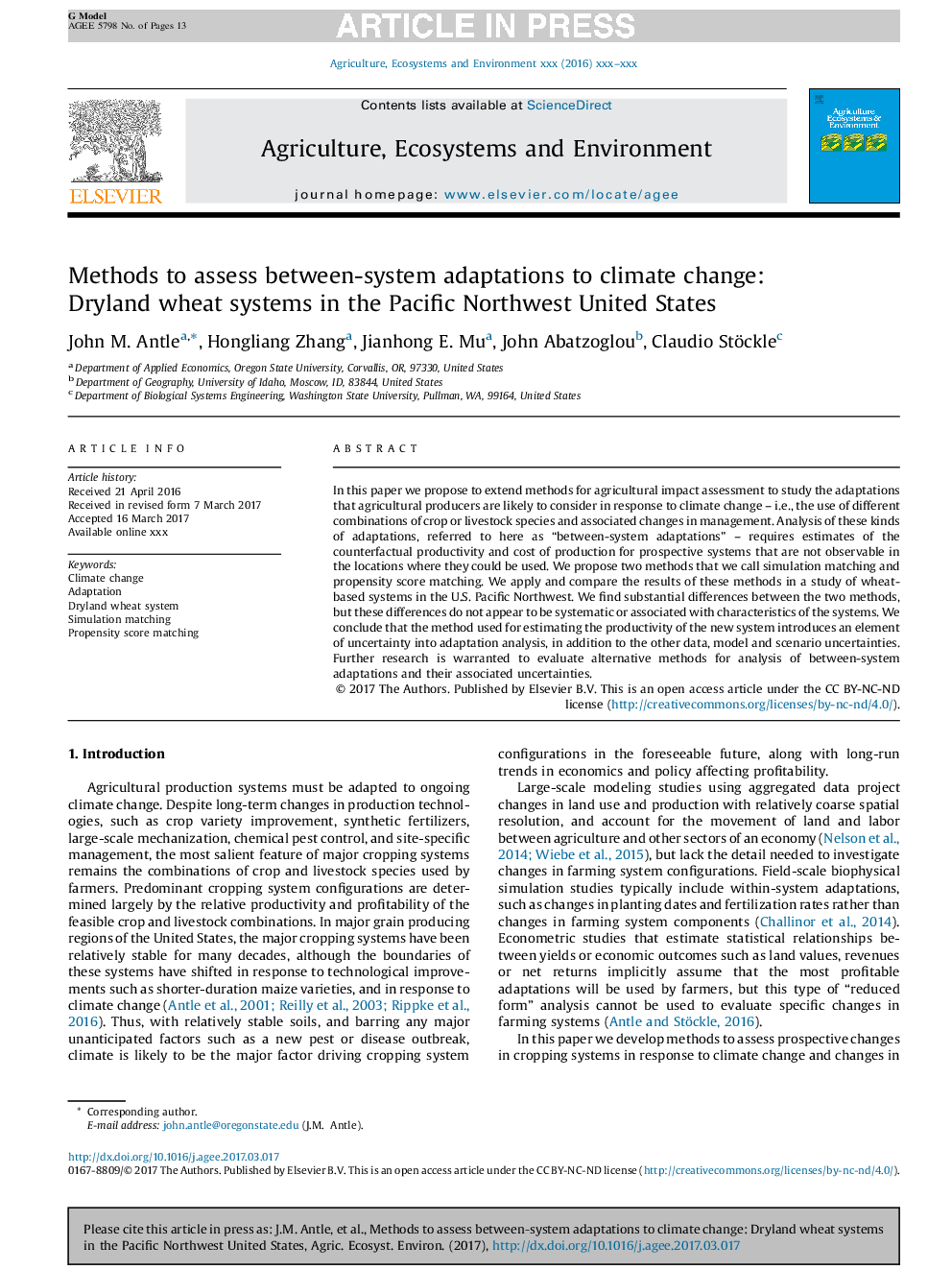| Article ID | Journal | Published Year | Pages | File Type |
|---|---|---|---|---|
| 8487245 | Agriculture, Ecosystems & Environment | 2018 | 13 Pages |
Abstract
In this paper we propose to extend methods for agricultural impact assessment to study the adaptations that agricultural producers are likely to consider in response to climate change - i.e., the use of different combinations of crop or livestock species and associated changes in management. Analysis of these kinds of adaptations, referred to here as “between-system adaptations” - requires estimates of the counterfactual productivity and cost of production for prospective systems that are not observable in the locations where they could be used. We propose two methods that we call simulation matching and propensity score matching. We apply and compare the results of these methods in a study of wheat-based systems in the U.S. Pacific Northwest. We find substantial differences between the two methods, but these differences do not appear to be systematic or associated with characteristics of the systems. We conclude that the method used for estimating the productivity of the new system introduces an element of uncertainty into adaptation analysis, in addition to the other data, model and scenario uncertainties. Further research is warranted to evaluate alternative methods for analysis of between-system adaptations and their associated uncertainties.
Related Topics
Life Sciences
Agricultural and Biological Sciences
Agronomy and Crop Science
Authors
John M. Antle, Hongliang Zhang, Jianhong E. Mu, John Abatzoglou, Claudio Stöckle,
